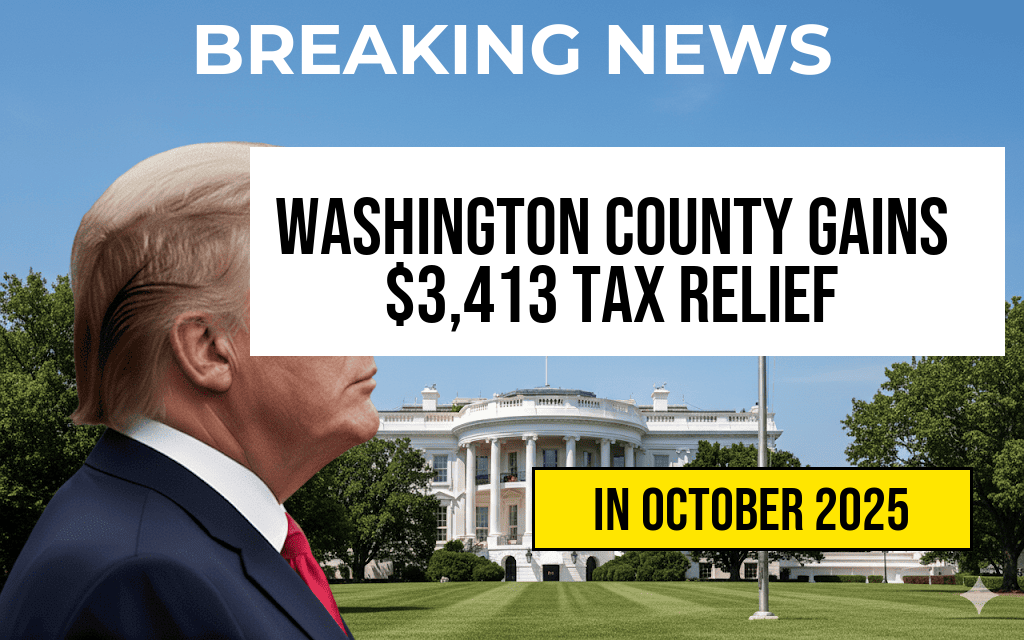Taxpayers across the United States could see an average reduction of $3,752 in their annual tax bills thanks to a new legislative measure dubbed the “One Big Beautiful Bill.” This sweeping tax reform aims to simplify the current tax code while providing substantial relief to millions of Americans. The legislation consolidates several tax credits, deductions, and exemptions into a streamlined framework, making it easier for filers to understand and maximize their savings. Experts project that the bill could impact a broad spectrum of earners—from middle-class families to small business owners—by reducing tax liabilities significantly. As discussions around fiscal policy intensify, analysts and citizens alike are closely scrutinizing the bill’s provisions, potential economic impacts, and how it might reshape the tax landscape in the coming years.
What the Bill Changes and Who Benefits
The legislation introduces a comprehensive overhaul of the existing tax system. Its primary goal is to lower taxes while maintaining fiscal responsibility. Key components include increased standard deduction amounts, expanded child and dependent credits, and a simplified tax bracket structure. According to the Congressional Budget Office (CBO), the average taxpayer could see their tax bill drop by nearly $3,752 annually, though the actual savings will vary based on income level, filing status, and deductions.
Major Provisions of the Bill
- Increased Standard Deduction: The bill doubles the standard deduction for single filers and married couples filing jointly, reducing taxable income for millions.
- Expanded Child Tax Credit: The credit increases and extends eligibility, providing greater relief to families with children.
- Consolidation of Itemized Deductions: Several deductions are combined into broader categories to simplify filing and eliminate some benefits, aiming to reduce compliance costs.
- Tax Bracket Simplification: The number of tax brackets is reduced from seven to four, making it easier for taxpayers to understand their obligations.
- Simplified Business Tax Rules: Small businesses gain access to new credits and streamlined reporting, supporting economic growth.
Economic Implications and Public Response
Economists predict that the bill, by increasing disposable income for many households, could stimulate consumer spending and bolster economic growth. The Congressional Budget Office estimates that the legislation could lead to a 0.5% uptick in GDP over the next two years, assuming no offsets elsewhere. However, some critics raise concerns about the potential increase in the federal deficit, which could grow by an estimated $1 trillion over a decade if revenue decreases aren’t balanced by spending cuts or economic gains.
Support and Opposition
| Supporters | Opponents |
|---|---|
| Small business associations Fiscal conservatives Middle-class families |
Progressive advocacy groups Tax policy experts concerned about deficit impact Some economists worried about long-term sustainability |
Proponents argue that the bill promotes economic vitality by putting more money directly into taxpayers’ pockets, which could lead to higher savings and investment. Conversely, opponents warn that the fiscal shortfall could hamper future government programs and increase national debt. As debates unfold, the bill’s passage appears contingent on negotiations within Congress, where both sides weigh the balance between immediate relief and long-term fiscal health.
Looking Ahead: Implementation and Impact
If enacted, the legislation is expected to take effect starting with the upcoming tax season. Taxpayers will see the benefits reflected on their 2024 filings, with many reporting lower liabilities compared to previous years. Financial advisors recommend reviewing withholdings and adjusting estimated payments to maximize the new benefits. The bill’s success will largely depend on how effectively the IRS can implement the simplified rules and how taxpayers adapt to the changes.
For more details on the legislative details, consult sources like the Wikipedia page on U.S. tax reform or stay updated through reputable news outlets such as Forbes.
Frequently Asked Questions
What is the main benefit of the “One Big Beautiful Bill”?
The main benefit is that it can help you save $3,752 on your taxes, significantly reducing your tax liability for the year.
How does the bill achieve these tax savings?
The bill introduces tax cuts and incentives that lower your taxable income and increase deductions, resulting in substantial tax savings.
Who can benefit the most from the “One Big Beautiful Bill”?
Individuals and families with higher income levels or those who can maximize deductions and credits will see the greatest tax savings.
Are there any eligibility requirements to qualify for these tax benefits?
Yes, eligibility depends on your income level, filing status, and other factors outlined in the bill, so it’s important to review specific eligibility criteria.
When will these tax savings take effect?
The tax savings are expected to be applicable for the upcoming tax year once the bill is passed and enacted into law.






